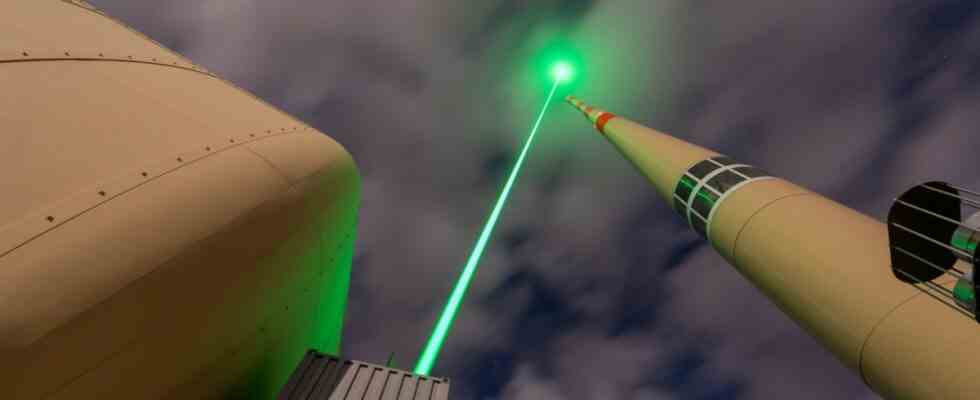During a thunderstorm, a laser can lead lightning discharges to a lightning conductor like a guide beam. This is shown by the study by an international research group on a 124 meter high radio tower on the Swiss mountain Säntis. The finding could lead to better lightning protection for airports, launch pads and large infrastructure facilities, writes the team around Aurélien Houard from the Laboratoire d’Optique Appliquée in Palaiseau near Paris in the specialist magazine Nature Photonics.
The Säntis is known for the fact that the weather can change quickly here. Its exposed location means that around 400 lightning bolts strike it every year. For this reason, scientists chose him for their project. In the EU project “Laser Lightning Rod” the physicists there tested a new type of lightning rod, called the “lightning cannon”.
The use of lasers for lightning protection was suggested as early as 1974. The use of lasers to guide lightning was demonstrated in the laboratory at the end of the 1990s. However, outdoor attempts failed in 2004 in the US state of New Mexico and in 2011 in Singapore. The scientists attribute the fact that the experiments on Mount Säntis were successful to the fact that the laser pulse repetition rate was two orders of magnitude higher than in earlier experiments. The laser used emitted light with a wavelength of about one micron (thousandths of a millimeter) and a repetition rate of 1000 hertz.
Videos show: By guiding the laser, the lightning strikes the tower much more precisely
The air becomes a lightning conductor. The laser beam creates a conductive channel in the air. It ionizes the molecules in the air in its path, creating free electrons, like in an electrical conductor. In this “filament” the air is considerably more conductive than in the surrounding area, which is why it facilitates lightning discharges. Depending on the strength of the laser, a lightning conductor several hundred meters high can be generated.
The researchers benefited from the fact that the tower on the Säntis was repeatedly used for lightning measurements in recent years. “This tower, which is struck by lightning about a hundred times a year, is equipped with multiple sensors that record the lightning current, electromagnetic fields at different distances, X-rays and radiation sources of the lightning discharges,” the study authors write. They installed more measuring devices and two high-speed cameras that recorded lightning strikes at up to 24,000 frames per second.
The laser beam of the “lightning cannon” is aimed in such a way that it comes very close to the top of the tower.
(Photo: Martin Stollberg; Martin Stollberg / Trumpf)
These cameras were located 1.4 and 5 kilometers from the top of the tower and only provided usable results when visibility was good. This was the case for one of the four recorded flashes where the laser was on. The camera images show that the lightning coils around the laser beam for more than 50 meters and then strikes the tower’s lightning rod. The slightly tilted laser beam was aimed so that it came close to the top of the tower. Comparisons with recorded lightning strikes without a laser show that the lightning strikes the tower’s lightning rod much more precisely thanks to the guidance of the laser.
“The results of the Säntis test campaign in summer 2021 provide circumstantial evidence that filaments formed by short and intense laser pulses can conduct lightning discharges over considerable distances,” the study authors conclude. However, these preliminary results should be confirmed by further test series with new configurations.

